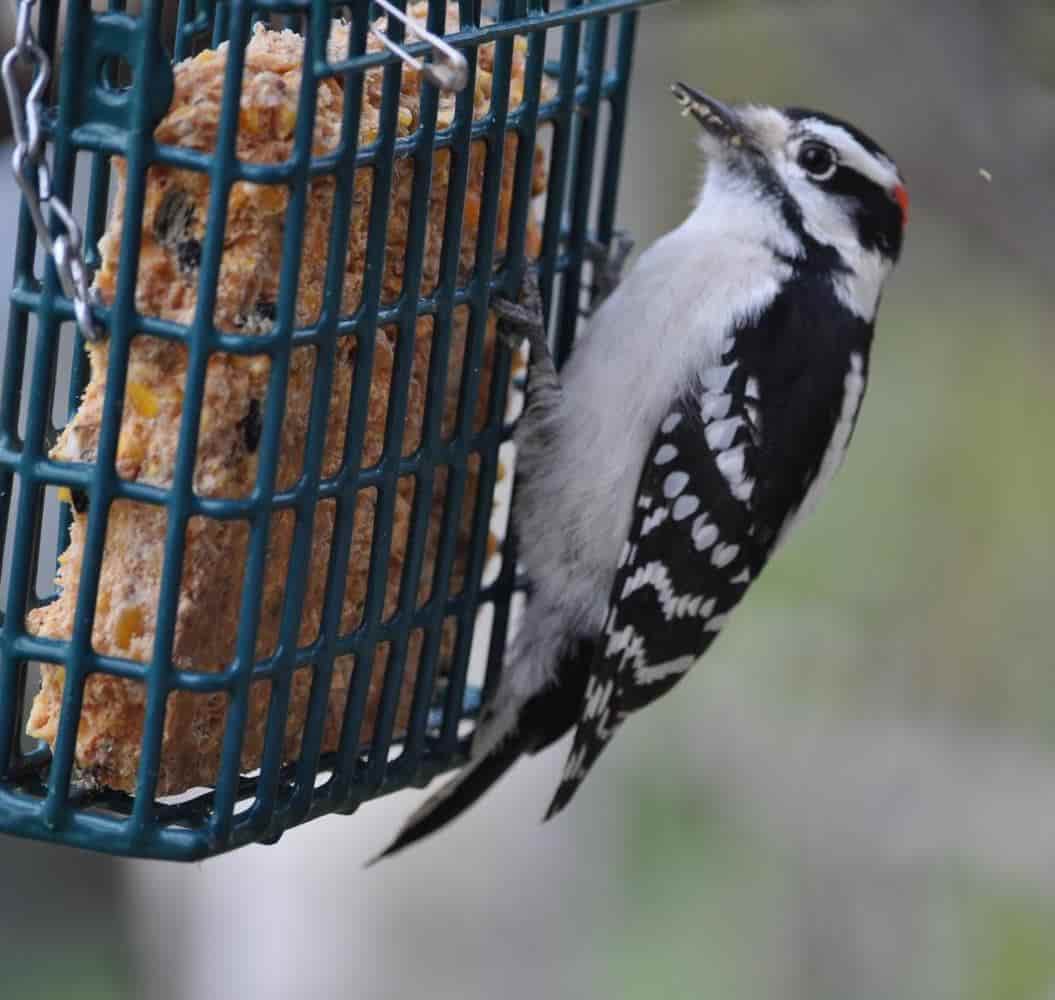Suet Bird Feeders
Suet bird feeders are specialty feeders that are under-appreciated when it comes to attracting birds to your backyard. They can attract birds that otherwise wouldn't bother with the other types of feeders described here. So, if you want to attract birds that rely more on insects for food than on seed, a suet bird feeder is what you need. Read on for our tips to get the most of your suet feeder.
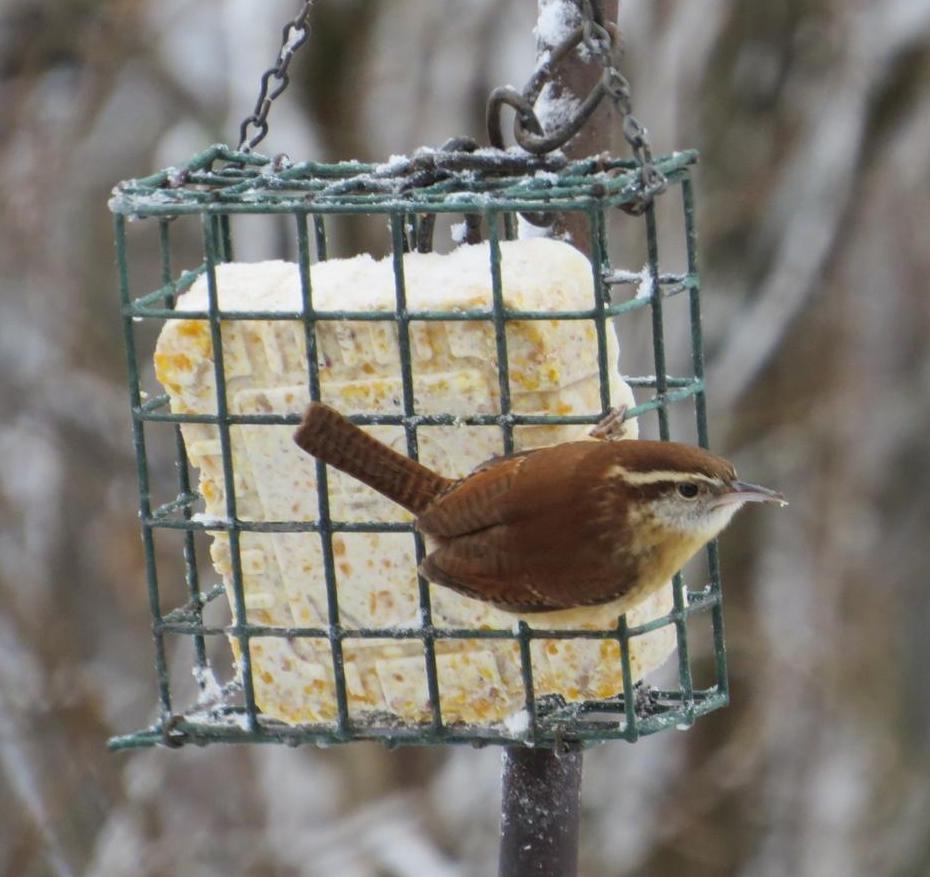
What is Suet?
Suet is a type of bird food that too few people take advantage of to attract birds to their backyards. It is a high-protein mixture of fat or peanut butter, and is often mixed with nuts and berries. As such, when you provide suet, you can attract birds that mostly eat insects and not seeds.
For suet, you can either mix up your own, or buy commercially prepared suet cakes. The pre-made ones are available at most any store that sells bird feeders, and are generally quite inexpensive. One advantage of pre-made cakes is they are made to fit closely in the wire cage type suet feeders, making it really easy to provide for the birds.
Another advantage of pre-made cakes is the do-it-yourself ones tend to be messy to make. If you don't mind the mess, DIY cakes are good in that you can customize what goes into it.
How do you Feed Suet?
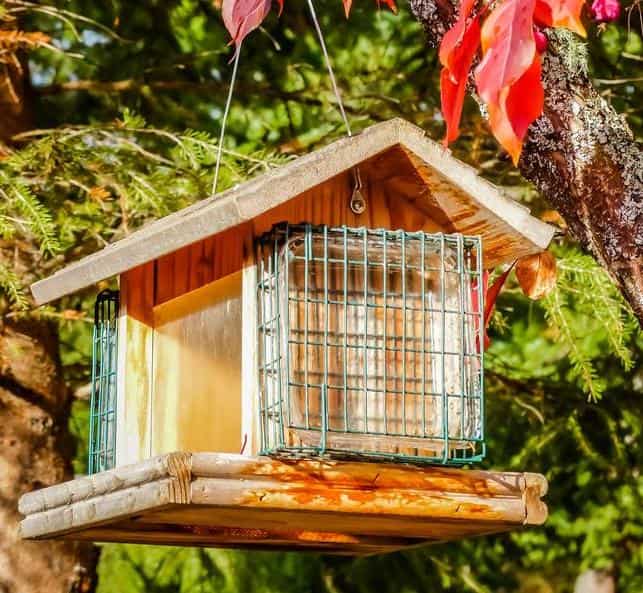 Suet cage on hopper feeder
Suet cage on hopper feederSuet feeders are often just small wire cages which birds cling to while feeding through the wire mesh. Unless the weather is really hot, a suet cake will hold its shape, so melting is not much of an issue. Some hopper feeders also have a suet cage attached to the side of the hopper, so you can get the best of both worlds.
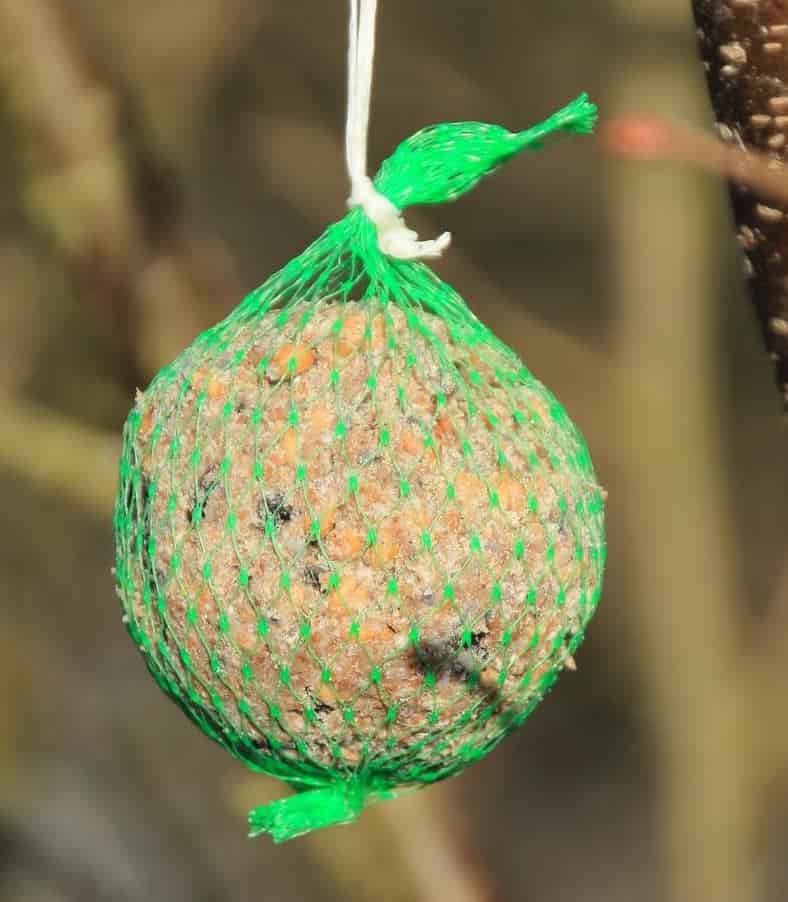
You can also use mesh bags of the type used to sell onions in grocery stores. These are effective, but have one drawback. Occasionally, a bird will get a food caught in the fine mesh and not be able to escape. If you're like me, the last thing you want to find when coming home from work is a dead bird hanging from one of your feeders.
The types of birds attracted to suet feeders are ones known more for feeding along tree limbs and trunks than on the ground. Think woodpeckers, wrens, warblers, and nuthatches, for example. To attract these birds, attach or hang suet feeders along tree trunks.
Pests
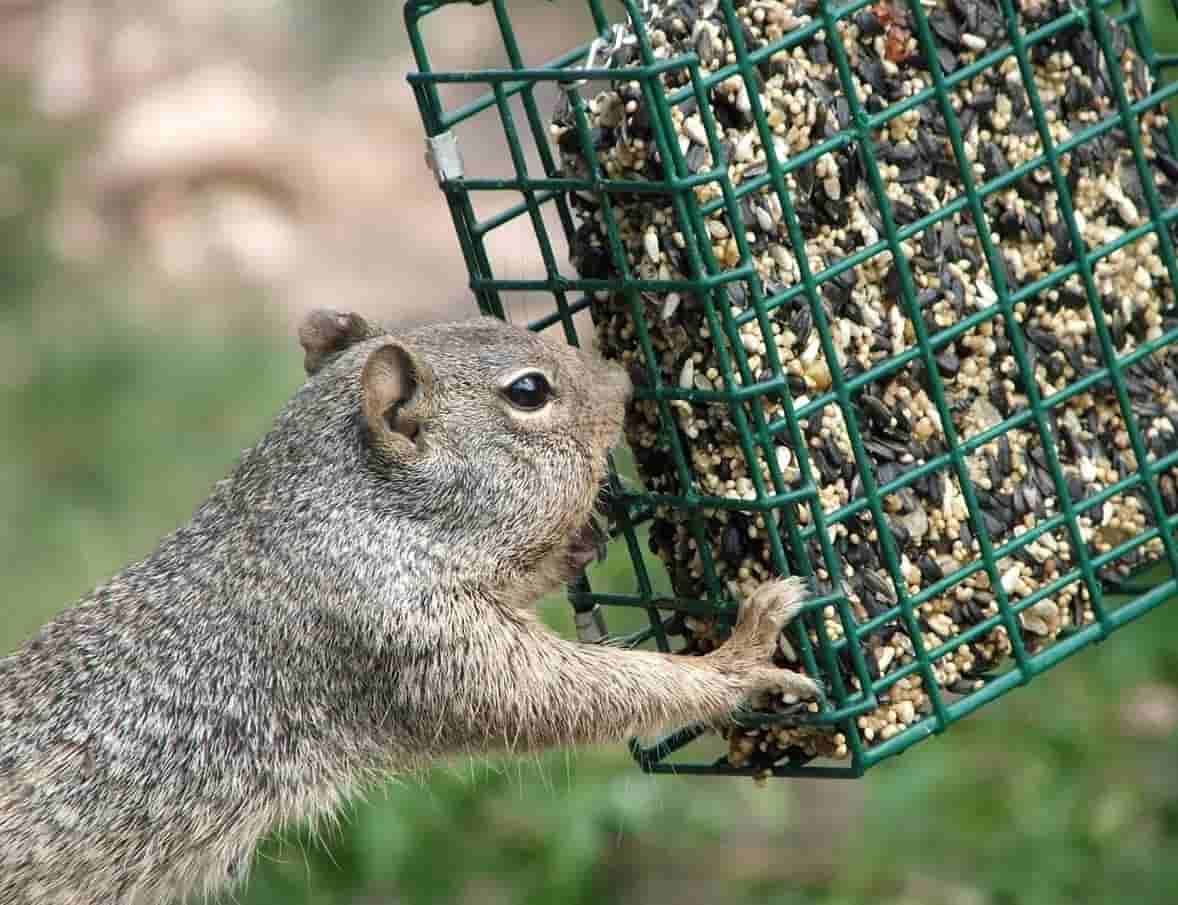
Squirrels can be pests at suet feeders, but so can European Starlings. To discourage Starlings, some suet feeders are designed with the only opening to reach the feed at the bottom. This requires birds to hang and feed upside down, something Starlings don't really like to do.
Feeding Suet in Summer
When used in the summer, suet can spoil rather quickly at high temperatures, so you will need to be careful and replace suet frequently. A common misconception about suet feeding is it should only be done in the winter when fat to fuel birds' high metabolism is necessary in the cold temperatures. But this is not really true. Yes, the fat is really beneficial in cold weather. However, studies have shown that woodpeckers will actually consume more suet during the breeding season than in winter. An added advantage with summer feeding is that woodpeckers will bring their young to suet feeders, giving you the joy of watching woodpecker families feeding together.
Care
As with all feeders, suet feeders must be cleaned regularly. This is true throughout the year, but particularly so in summer. Since suet can spoil, you don't want to leave spoiled residue on a feeder and run the risk of bringing disease to the birds in your backyard. Our advice is to clean the feeder every time you refill the suet.
Click here for more advice on cleaning bird feeders.
Summary
Suet bird feeders are under-appreciated, but really should be part of your backyard feeding operation. They can bring in species that otherwise you might not see in your backyard. So, try one out and Enjoy!
